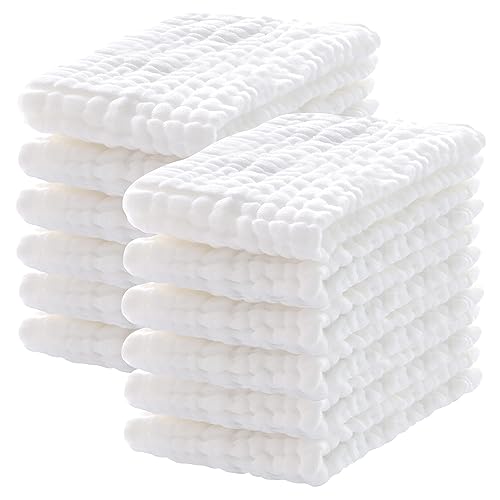Are you tired of constantly buying disposable diapers for your little one? Look no further than cloth diapers! Not only are they a sustainable solution, but they can also save you money in the long run.
But wait, do they actually work? In this post, I’ll dive into the age-old question: do cloth diapers leak? Get ready to learn everything you need to know about this eco-friendly alternative to traditional diapers.

Let’s get started!
Do Cloth Diapers Leak?
Cloth Diapers Do leak if the fit is not proper or if the absorbing material is poor. If you have ever used a cloth diaper, chances are less that you don’t yet know about leakage problems. Leaking cloth diapers is one of the primary concerns among parents.
This is also the core reason why many parents prefer disposable diapers. Disposable diapers feature a snuggly fit with highly absorbent makeup and mitigate the chances of high leakage.
On the other hand, cloth diapers are nowhere near leakproof, and you can never rest in peace with your babies in cloth diapers.
How much pee can a cloth diaper hold?
Cloth diapers can hold varying amounts of pee depending on their absorbency and the type of cloth used. On average, a cloth diaper can hold around 8-12 ounces of pee, which is equivalent to 1-1.5 cups or 236-354 milliliters. However, some high-quality cloth diapers can hold up to 16 ounces or more.
The amount of pee a cloth diaper can hold depends on several factors. The type of cloth used, such as cotton, bamboo, or hemp, can affect absorbency.
Some fabrics are more absorbent than others, which means they can hold more pee. Additionally, the number of layers in the cloth diaper can also affect absorbency. Some cloth diapers have multiple layers, which can increase their capacity to hold pee.
The fit of the cloth diaper can also impact how much pee it can hold. If a cloth diaper is too loose or too tight, it may not be able to hold as much pee as it would if it were properly fitted.
Proper fit can prevent leaks and ensure that the cloth diaper can hold the maximum amount of pee. It’s important to adjust the fit of the cloth diaper as the baby grows to ensure optimal absorbency.
It’s essential to change a cloth diaper as soon as possible after it becomes wet to prevent leaks and keep the baby comfortable. A cloth diaper that is already at its maximum capacity may not be able to hold any more pee, which can lead to leaks.
Changing the cloth diaper frequently can also help prevent diaper rash and other skin irritations that can occur when a baby’s skin is exposed to moisture for extended periods.
Do cloth diapers leak more than disposables?
Generally, cloth diapers leak more often as they can absorb a lesser amount of liquid as compared to disposable diapers.
However, both types of diapers can leak. Cloth diapers are more prone to leaks if they are not fitted properly. If they are too loose or too tight, they can leak. However, if they are fitted correctly, they can be just as effective as disposables in preventing leaks.
Disposables, on the other hand, are designed to be super absorbent and can hold more liquid than most cloth diapers.
However, this can also make them more prone to leaks if they are not changed frequently enough. Additionally, disposables can sometimes leak due to poor fit or if the baby is in a certain position.
Overall, whether cloth or disposable diapers leak more depends on a variety of factors, including how well they are fitted, how frequently they are changed, and the individual baby’s body type and movements.
Both types of diapers can be effective in preventing leaks if used properly. It’s important to find the type of diaper that works best for you and your baby’s needs.
Why do Cloth Diapers Leak?
Here are the top 3 reasons why cloth diapers leak:
Improper Diaper Fit
The diaper is either too tight or too loose. Or is it fitting the baby well around the pubis but loose around the legs? Poor diaper fit will inevitably lead to leakage.
The best way to prevent this is always to buy cloth diapers according to the age and weight of the baby. Always buy cloth diapers true to the size.
Poor Absorbant Material
Cloth diapers do not have any added absorbance material or microfiber like disposable diapers. So, they can never absorb like disposable diapers.
The best way to prevent the problem is to attack some extra micro fibre layers in the diaper or stitch some old pieces with the new cloth diaper. When doing this, ensure that you always stitch the old ones at the back that never touches the skin directly.
Diaper Repelling
Diaper repelling happens due to build-up. After using washable diapers for a considerable time, you will find there is residual build-up in the diaper even after washing it well.
This residual build-up slowly decreases the overall absorbing capacity of the Diaper. The phenomenon is repelling, meaning the skin repels that cloth diaper. The best way to stay away is never to use a cloth diaper for too long.
Different Scenarios of Cloth Diaper Leaks
Cloth diapers can leak at various times, but here are some typical scenarios when cloth diapers leak the most:
Cloth Diaper Leaking at Night
During the night, the baby usually remains in the same diaper for a long time. If the cloth diaper gets wet once, it cannot absorb any more and needs immediate changing.
It is always better not to use cloth diapers at night and use disposables instead. If you use cloth diapers, you must check on them repeatedly because wearing a wet diaper will give rise to cough and cold issues in the baby.
Cloth Diaper Leaking Around Legs
The areas around the legs feature the pubic crevice, and the diaper’s fit is inappropriate in this region. So, there is much leakage around this area.
Whenever buying cloth diapers, always look for the best-fitting ones, especially around the leg area. It is impossible to attach any extra microfiber in this area, so choosing the best fit is the best option.
Cloth Diaper Leaking Through Stitching
Since the cloth surface near the stitching is uneven, the stitching zones don’t fit the skin. These become prominent areas of leakage for cloth diapers.
Always choose cloth diapers that have minimal stitching areas showing up.
The diapers which have to stitch on the bottom layers are the best because the surface that touches the skin is even, and there are fewer leakage chances.
How Tight Should a Cloth Diaper Be?
To prevent leakage, many parents tie the cloth diapers so tight that the baby often develops dermatological problems owing to excessive skin stress and abrasion.
The cloth diaper should be tight enough to prevent leakage but not too tight to cause discomfort in the child.
Also, there should always be a small gap between the baby’s skin and the cloth diaper to allow some airflow.
How do you make cloth diapers not leak?
Now that we know much about the problem, let us have some discussion about how to prevent cloth diaper leakage:
Buy the Right Size
Unlike disposable diapers, cloth diapers are available in multiple sizes and covers. You must consider two things while buying cloth diapers – the baby’s age and weight.
The primary area where cloth diapers don’t fit babies is around the leg. Whenever buying cloth diapers, ensure that they fit around the legs.
Go for smaller sizes rather than bug sizes. Remember, these are not clothes that your baby will be able to wear for the long run if you take the next big size.
Prepping the Diaper
Disposable diapers need no preparation. You can simply take them out of the packet and fit them into your baby. Cloth diapers, on the other hand, need some preparation.
You must wash the cloth diapers multiple times before actually using them. It may attain an oily texture when washing the diaper because the natural fibers in the cloth diaper, such as hemp, will release some natural oils.
Always clean the diaper properly before using it. When the cloth diaper is seasoned correctly, it absorbs better, thus reducing leakage.
Enhancing Absorbance Capacity
Most cloth diapers do not have enough absorbance power. Cloth fiber cannot be as absorbent as disposable diapers. The best trick to enhance the efficiency of regular cloth diapers is to attach some strips of old cloth diapers. This is a great way to improve absorbance.
Simply stitch some old diaper cloth at the back of the new one. It will give the new cloth diaper some texture and improve the absorbance power.
Change Diapers Frequently
Cloth diapers cannot protect your baby against leakage for a long time. Instead, cloth diapers can give protection for just a few hours.
It is not disposable diapers that you can keep on for hours without worrying about leakage. When your baby has a cloth diaper on, ensure that you check on them frequently and keep on changing the diapers now and then to prevent leakage.
Here are some of the best cloth diapers on Amazon:
FAQs
Do cloth diapers leak a lot?
Cloth diapers can leak, but it depends on factors such as fit, absorbency, and how often they are changed.
Do you change a cloth diaper after every pee?
It is generally recommended to change a cloth diaper every two to three hours during the day, and to check it every few hours at night. However, some sources suggest changing the diaper before it starts to sag or feel heavy, while others suggest wiping the baby lightly instead of changing the diaper for every pee.
How many cloth diapers do you use in a day?
The number of cloth diapers used in a day depends on the age of the baby and the frequency of washing. Newborns may need 8-12 diapers a day, while older babies may need 6-10 diapers a day. It is generally recommended to have at least a two-day supply of diapers on hand, so the total number of diapers needed will depend on how often the diapers are washed.
Do babies feel wet in cloth diapers?
Babies may or may not feel wet in cloth diapers depending on the type of diaper being used. Some cloth diapers have a stay-dry layer, while others allow the baby to feel the wetness. Feeling wetness can help babies become more aware of when they have gone potty, but it’s important to change the diaper promptly to prevent discomfort or diaper rash.
Do you really save money using cloth diapers?
Using cloth diapers can save money in the long run compared to using disposable diapers due to its reusability. The exact amount of money saved depends on factors such as the cost of disposable diapers in the area, the cost of water and electricity for washing cloth diapers, and the number of cloth diapers needed.
Conclusion
Let’s conclude the post on whether cloth diapers leak!
If you find cloth diapers to be leaky work on the solutions I discussed here. Also, do take care of cloth diaper fitting as that is the most crucial thing here.



